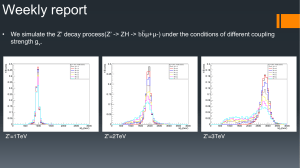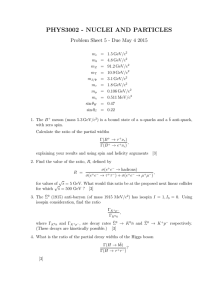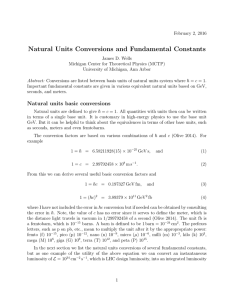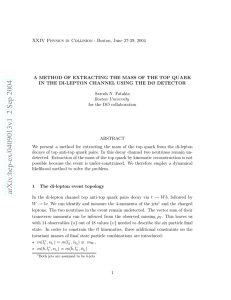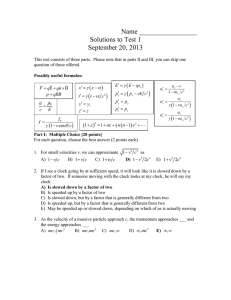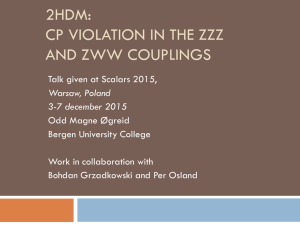8.851 Homework 9 - Non-Relativistic QCD
advertisement
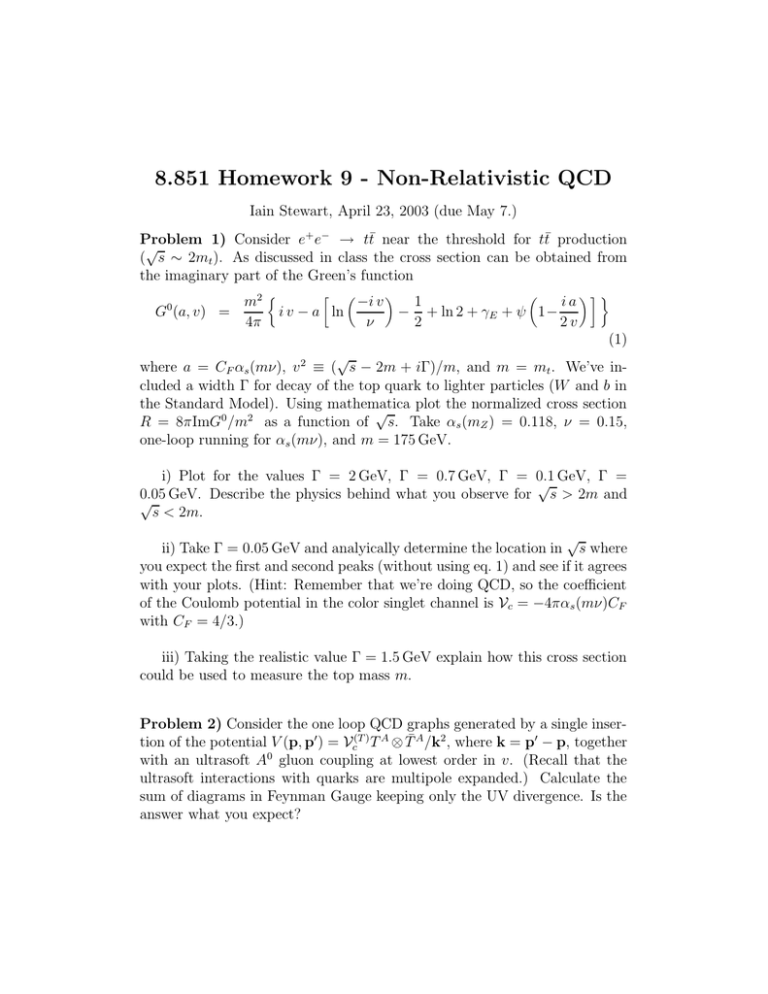
8.851 Homework 9 - Non-Relativistic QCD Iain Stewart, April 23, 2003 (due May 7.) Problem 1) Consider e+ e− → tt¯ near the threshold for tt̄ production √ ( s ∼ 2mt ). As discussed in class the cross section can be obtained from the imaginary part of the Green’s function m2 G (a, v) = 4π 0 � −i v 1 ia i v − a ln − + ln 2 + γE + ψ 1− ν 2v 2 � � � � ��� (1) √ where a = CF αs (mν), v 2 ≡ ( s − 2m + iΓ)/m, and m = mt . We’ve in­ cluded a width Γ for decay of the top quark to lighter particles (W and b in the Standard Model). Using mathematica plot the normalized cross section √ R = 8πImG0 /m2 as a function of s. Take αs (mZ ) = 0.118, ν = 0.15, one-loop running for αs (mν), and m = 175 GeV. i) Plot for the values Γ = 2 GeV, Γ = 0.7 GeV, Γ = 0.1 √ GeV, Γ = 0.05 √ GeV. Describe the physics behind what you observe for s > 2m and s < 2m. √ ii) Take Γ = 0.05 GeV and analyically determine the location in s where you expect the first and second peaks (without using eq. 1) and see if it agrees with your plots. (Hint: Remember that we’re doing QCD, so the coefficient of the Coulomb potential in the color singlet channel is Vc = −4παs (mν)CF with CF = 4/3.) iii) Taking the realistic value Γ = 1.5 GeV explain how this cross section could be used to measure the top mass m. Problem 2) Consider the one loop QCD graphs generated by a single inser­ tion of the potential V (p, p� ) = Vc(T ) T A ⊗ T̄ A /k2 , where k = p� − p, together with an ultrasoft A0 gluon coupling at lowest order in v. (Recall that the ultrasoft interactions with quarks are multipole expanded.) Calculate the sum of diagrams in Feynman Gauge keeping only the UV divergence. Is the answer what you expect?
